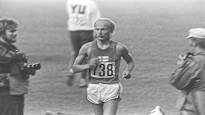In recent years, Finnish runners have achieved good results, especially on longer distances. In the background, we can see the athletes’ successful change of sport, writes Petri Hänninen.
Petri Hänninen sports reporter
Paris Olympics on channels 26.7.–11.8. Go to the competition website here.
I woke up from my sweet sleep during the rooster crowing to the demanding ringing of the phone. It was the end of the 1980s and my slate brown landline continued to ring.
I wriggled myself out of the water bed and in my sleep I whispered something vague into the phone that reminded me of my name.
There was half a second of silence and then a high-pitched introduction came from the handset, electrifying my body and waking me up in an instant.
– Juha of Väätäinen here’s healthy.
Väätäinen, a colorful athlete, had a strong reputation, after all, his nickname during his running years was “Julma-Juha”.
The 1971 double European endurance running champion had just been chosen as the new head coach of the Finnish Sports Federation’s endurance running. There was a rumor going around inside that he was calling potential runners.
Väätäinen wanted me to join the coaching group of the national team runners he had assembled. At that time, I was among the best in Finland in the 400 meter sprint. However, the requirement was to change the distance: I should start as an endurance runner.
400 meters is still a fast distance, but half as long as 800 meters is already an endurance distance. Sports training is completely different and it made me think.
However, Väätäinen was right. Internationally speaking, I was too slow for a track lap.
Väätäinen once won two SC golds at 800 meters, but switched to longer distances. He trained like a madman for a few years and won the unforgettable European championships at 5,000 and 10,000 meters in 1971 in Helsinki.
Väätäinen’s way of thinking is still correct. Many other modern athletes and their coaches have come to the same conclusion.
One important factor behind the good results of Finnish runners in recent years has been the athletes’ successful changes of sport. The result has been several Finnish records and prestigious competition gold.
Finnish records and EC gold
Top Raitanen in time made a total change of sport from orienteer to endurance runner. When I interviewed Top for the first time, he was still an orienteer who said he wanted to become a runner because it was an Olympic sport.
I encouraged him to make it happen. As we know, the change of sport spawned the 3,000m hurdles European Championship and eighth place at the Olympic Games.
Junior European champion Ilona Mononen switched from smooth endurance rides to obstacles. With almost no obstacle training, he made himself sixth in the 3,000-meter steeplechase European Championships in Rome, set a new Finnish record and qualified for the Paris Olympics. Expectations for the future are high.
Camilla Richardson moved away from steeplechase, to longer distances and has already run new Finnish records in 10,000 meters, half marathon and marathon.
Mainly had a good time with ton vitos Nathalie Blomqvist tried longer distances and finished fifth in the European 5,000 meters in Rome. He has also broken years-old Finnish records in both 3,000 and 5,000 meters.
Ran 10,000 meters when younger Nina Chydenius extended the distance to the marathon, but came back to 10,000 meters and took a surprising eighth place at the European Championships in Rome.
Eveliina Määttänen again changed from 400 meter fences to 800 meter fences. In his new sport, he has already represented Finland in four prestigious competitions and ran the 800-meter indoor SE.
The sprinters have made a bold move Viljami Kaasalainenwho changed the 100 meters to the track lap and last year ran the distance harder than any other Finn in more than 30 years.
The walkers have changed the route a couple of times Aku Bearden. From twenty to fifty and back. The latter forced because WA decided to end the entire sport.
Partase holds the Finnish records for walking at 10, 20 and 30 kilometers. In addition, the distance change resulted in 6th place in the World Championships and 5th place in the European Championships with 20 kilometers.
New sport, harder results?
Of course, behind all the above-mentioned athletes there is also competent top-class coaching. Without it, it is difficult to reach records.
Changing sports may sound challenging at first, but athletes are born to meet challenges. Even at the moment, many Finnish athletes could do better results as a result of a successful change of sport.
Even if the athlete is at the top in Finland, it is worth considering whether the international opportunities would be better in another sport.
Now, I’m not saying that all runners should increase their distance, but you can always try something new. As age, experience and kilometers increase, the possibilities open up more clearly. Only the sky is the limit and there are many examples.
Internationally successful species changers can be found immediately in neighboring countries. Norwegian Karsten Warholm switched from competitor to hurdler and ran ME in the 400m hurdles.
Swedish Andreas Almgren moved up from 800 meters and set rock-hard Swedish records on outdoor tracks at 1,500, 5,000 and 10,000 meters.
